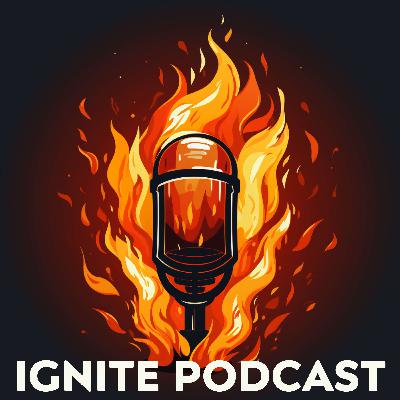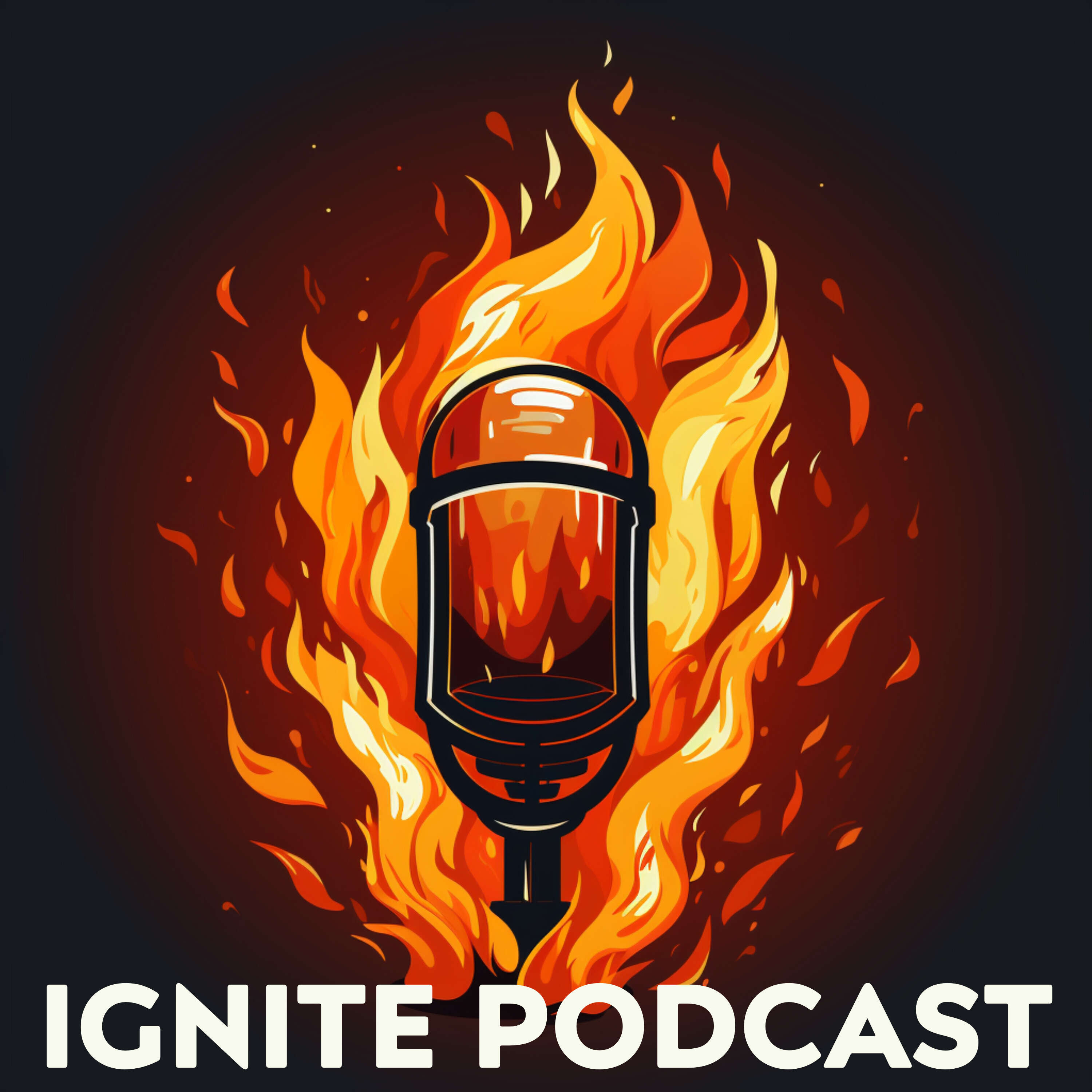Ignite VC: De-Risking Startups with Customers Before Capital with Collin Groves | Ep198
Description
In the world of venture capital, startups often compete for capital with little more than a pitch deck and projections. But what if investors could de-risk those bets by delivering something far more valuable than money—customers?
That’s exactly the model Collin Groves and his team at BDev Ventures have pioneered. Backed by software development powerhouse BairesDev, BDev Ventures operates with a single LP structure, helping founders not only access cash but also unlock real growth by bringing customers through the same outbound engine that scaled BairesDev itself.
In a recent conversation on the Ignite Podcast, Collin shared his journey from small-town Oklahoma to Georgetown MBA, through years in consulting and corporate venture capital, and into building one of the most innovative investment approaches in the Americas. Here are the key takeaways.
From Energy to Venture Capital
Collin didn’t grow up knowing what venture capital was. His early career started in energy at Phillips 66 before moving into consulting at Ernst & Young Parthenon, where he worked on $5 billion of M&A deals and digital transformations.
It was there he saw how corporations approached innovation: build, buy, or partner. But he added a fourth dimension—invest. That insight led him to co-found multiple corporate venture capital arms, helping Fortune 500 companies unlock innovation and partner with startups.
Enter BDev Ventures: Customers as Diligence
When Collin joined BairesDev three years ago, they had only made four investments. Today, BDev Ventures has invested in 60+ B2B SaaS startups across the Americas.
The secret? A 90-day pilot model. Instead of just writing checks, BDev plugs startups into its outbound lead generation platform, testing whether they can convert real customers before investing. If revenue doubles in a quarter, or conversion rates prove strong, it’s a powerful signal that the company has product-market fit.
This model not only de-risks investments but also gives founders confidence that BDev isn’t just another VC—it’s a growth partner.
A Hybrid VC Model
BDev Ventures is not a typical venture fund. It blends elements of:
* Corporate VC: Strategic tools and customer introductions that drive 3–45% of portfolio revenues.
* Family Office: Backed by a single LP (BairesDev founders), allowing flexibility and speed.
* Traditional VC: Discipline around fund structures, terms, and performance metrics.
This unique position allows Collin’s team to move fast once they see conviction, but also to wait and prove value before committing capital.
Red Flags and Green Flags in Startups
After 50+ deals, Collin has seen patterns.
* Red Flags: Founders misreporting contracted vs. actual revenue, co-founders splitting within months, or stalled revenue pipelines.
* Green Flags: Teams where every hire adds true leverage—doing tasks better than the CEO, freeing them to focus on superpowers.
Trust, transparency, and resilience during the pilot process are often the deciding factors.
Latin America vs. U.S. Startups
BDev invests across the Americas, giving Collin a unique perspective. He notes that:
* LatAm startups often want to expand to the U.S. too quickly. Instead, he advises them to own their market first and let U.S. customers pull them in.
* Valuations differ: LatAm companies typically see a 20–40% discount versus U.S. peers, due to fewer exits above $250M.
* Legal structures can be barriers: Countries like Brazil lack SAFE notes, often requiring Cayman entities to attract U.S. capital.
The Future of Venture Capital
Looking ahead, Collin predicts:
* AI-native products will flood the market, but many won’t be enterprise-ready. Startups that build durable companies around AI will win.
* Vertical SaaS resurgence: Instead of every company branding itself as “AI,” more founders will return to solving real, vertical-specific problems.
* Unlocking untapped value: Startups like Pinata (rent reporting for credit) and Yendo (car equity lending) are examples of how overlooked assets can become massive opportunities.
Beyond Venture: Leadership and Resets
A surprising favorite book Collin recommends to founders is Phil Jackson’s “Eleven Rings.” Jackson’s individualized leadership—like giving each player a custom book—resonates with how VCs can empower founders.
And when he needs a mental reset? Collin turns to pickup basketball. Unlike venture, which takes years for feedback, a game gives clarity in minutes.
Final Thoughts
Collin Groves is reshaping what venture capital can look like: not just money, but customers, trust, and a data-driven approach to growth. For founders, that means a partner who brings traction before capital—and for the venture industry, it’s a glimpse of what the future might hold.👂🎧 Watch, listen, and follow on your favorite platform: https://tr.ee/S2ayrbx_fL🙏 Join the conversation on your favorite social network: https://linktr.ee/theignitepodcast
Chapters:00:01 Collin Groves’ Oklahoma roots and early career03:07 Breaking into venture through corporate VC at EY06:57 What BairesDev is and how it powers BDev Ventures08:50 Why BairesDev launched a venture arm10:13 Blending corporate VC, family office, and traditional VC models11:53 Evergreen fund structure and GP/LP setup12:48 Incentives, carry, and the evolution of CVC compensation16:27 Liquidity timing: DPI vs. TVPI in venture capital19:19 Exiting too early vs. holding for fund-returners21:27 Scar tissue and lessons from corporate VC22:44 Importance of speed in diligence and value articulation24:27 Lead investor vs. co-investor strategies25:54 Evaluating churn, NRR, and GRR in early-stage SaaS26:31 Four key areas of diligence: value add, market, financials, and team28:58 The 90-day pilot model for testing startups30:56 Metrics that signal conviction during pilots32:56 Check sizes, co-investing approach, and capital efficiency34:44 Red flags, trust, and founder/investor alignment38:18 Latin America vs. US market dynamics and valuations41:21 AI-native go-to-market tools and enterprise readiness43:39 The limits of corporate VC-as-a-service46:31 Counterintuitive diligence metrics: why spam rate matters
Transcript
Brian Bell (00:01:00 ): Hey, everyone. Welcome back to the Ignite Podcast. Today, we're delighted to have Colin Groves on the program. He traded small-town Oklahoma roots for a Georgetown MBA, launched five corporate VC arms while at Ernst & Young Parthenon, and now sears a single LP fund backed by Latin American dev giant, Steph. On his remit, wire founders both cash and customers through the same outbound engine that scaled BDev's 4,000 engineer rocket. He's led investments in 50 plus B2B SaaS deals across the Americas and loves de-risking growth with hard data. Think of him as a venture capitalist who shows up with a box of warm leads instead of swag. That's awesome. Thanks for coming on.
Collin Groves (00:01:36 ): It's a pleasure. Thanks for having me.
Brian Bell (00:01:38 ): So yeah, maybe give us your origin story. I mean, I kind of breezed through it there, but I'd love to hear like kind of the roots of Colin.
Collin Groves (00:01:44 ): Absolutely. So you mentioned Oklahoma and I can start there. I grew up, and this is a similar story to a lot of VCs. The more that I meet is we didn't really know what venture capital was or startups were. I grew up where... The cities ran with oil, and that was the backbone. Then it was backed by real estate booms like that. If you look up the history of Oklahoma, though, and Sam Anderson's book is fantastic about this, but Oklahoma as a state was built on the boom and bust of not just oil, but as a city. They were one of the last states, but Oklahoma, one of the first to test out what sonic booms did to the entire population. And that was just because the state needed more funding. And all of a sudden you saw a boom in the economy after that. So I grew up in a cycle where there was a lot of boom and bust, but there was no label for it in terms of early stage companies. And I kicked off my career then obviously going into energy. I was at Phillips 66 at the time. And then I went and got my MBA and then I went into consulting and consulting. I had an idea that I wanted to be in venture, but I wasn't entirely sure how to navigate that. And so I did about $5 billion of M&A work and then worked on some digital transformations and the digital transformations were very eye-opening. And we would plot these use cases on pain points across B2B, B2C or supply chains. And usually what we would do is to plot those use cases, you would find a company or partnership, a startup that could fulfill them because they can build it and adapt to the market a lot quicker than these billion dollar corporations could at the time. But there was a lot of red tape. And so what we came up with was, this framework of build by partner. And then we came up with a fourth element of that, which was invest. And so what we found is corporations do the first three really well. They're great at building. They're great at buying. They're fairly good at partnering. They don't always have a great connotation when it comes to investing. And I think when we hear CBCs, even as VCs today, it's not always the best, but there are some incredible






